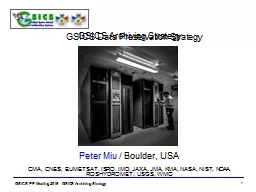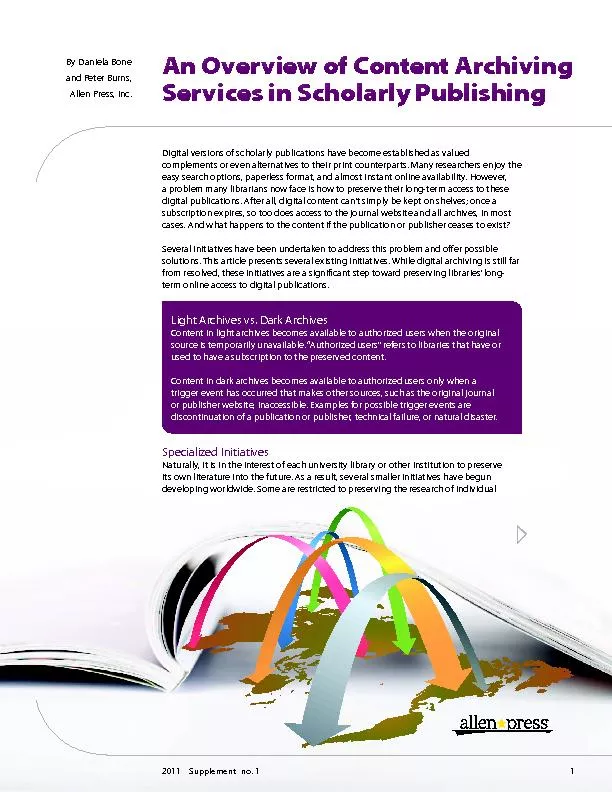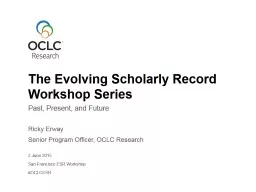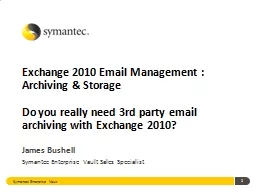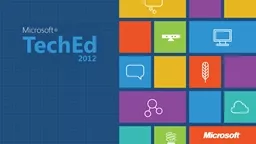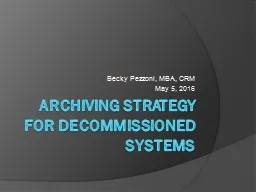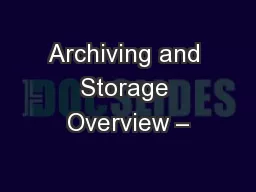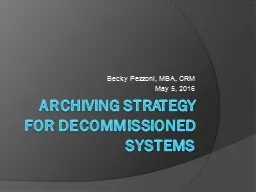PPT-Exchange Online Archiving: Notes from the Field
Author : mitsue-stanley | Published Date : 2017-07-19
Paul Robichaux Introduction Defining the playing field How Exchange Online Archiving works What you can do with EOA Choosing what to archive Best practices Defining
Presentation Embed Code
Download Presentation
Download Presentation The PPT/PDF document "Exchange Online Archiving: Notes from th..." is the property of its rightful owner. Permission is granted to download and print the materials on this website for personal, non-commercial use only, and to display it on your personal computer provided you do not modify the materials and that you retain all copyright notices contained in the materials. By downloading content from our website, you accept the terms of this agreement.
Exchange Online Archiving: Notes from the Field: Transcript
Download Rules Of Document
"Exchange Online Archiving: Notes from the Field"The content belongs to its owner. You may download and print it for personal use, without modification, and keep all copyright notices. By downloading, you agree to these terms.
Related Documents


